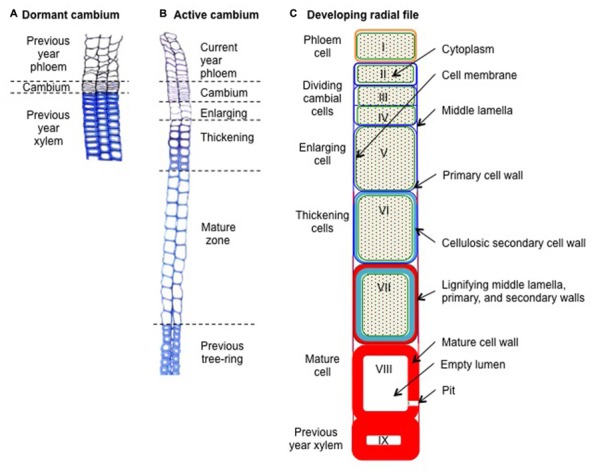FIGURE 1.

Schematic cross-sections through resting and developing radial xylem cell files in Scots pine (Pinus sylvestris L.). (A) Dormant cambium during winter composed of a thin strip of 4–6 reinforced cambial cells layers, looking like a “pile of plates,” and embedded between the xylem and the phloem formed during the previous growing season. (B) Active cambium and associated developing radial cell files at the beginning of summer. The active cambium, composed of a wide strip of 11–13 cambial cells layers, exhibiting wavy radial cell walls, is embedded between the newly formed phloem and xylem. The developing xylem, which is composed of an enlarging zone (3–4 cell layers), a thickening zone (seven cell layers), and a mature zone (12–13 cell layers), is embedded between the cambium and the previous tree ring. (C) Schematic view of a developing xylem radial file. Cell I represents a freshly formed phloem cell of the current year. Cells II–IV represents cambial cells, of which cells III and IV are dividing. Cell V represents an enlarging cell. Cells VI–VII represent thickening cells (note the beginning of the lignification at the corners of cell VI). Finally, cell VIII represent a mature, dead, and fully functional xylem cell (note the disappearance of its cytoplasm). Cell IX represents a latewood cell belonging to the previous tree ring (i.e., formed during the previous growing season). Green backgrounds represent cytoplasm, green lines represent cell membranes, blue lines represent cellulosic cell walls (dark blue for primary walls, light blue for secondary walls), and red areas represent lignified cell walls.
